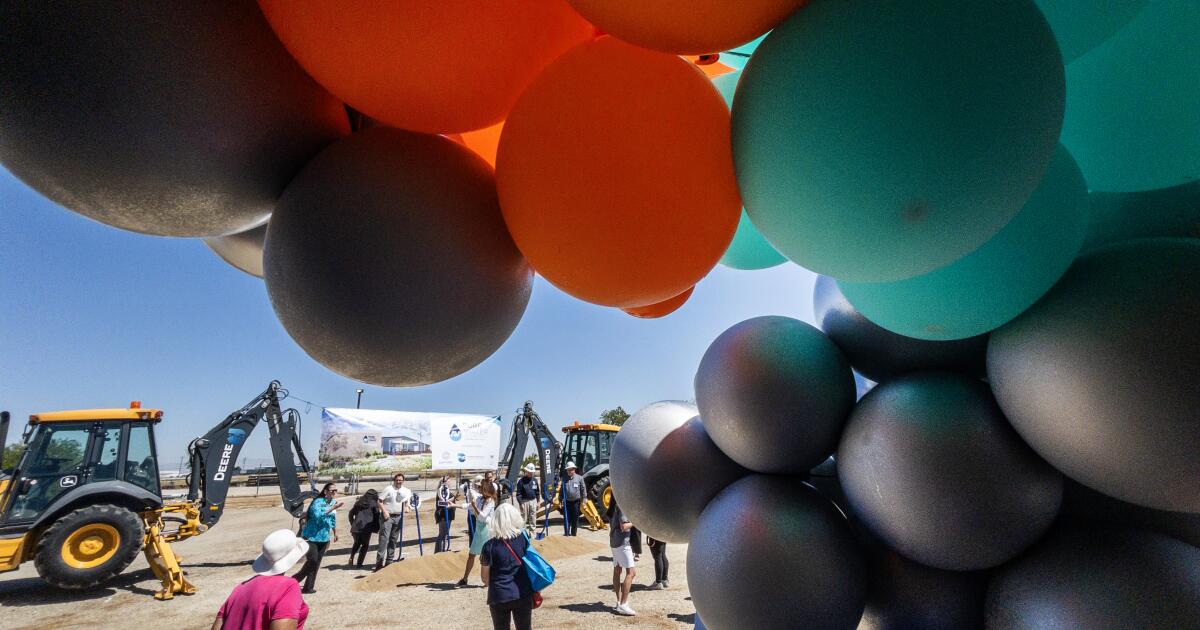As fossil fuel emissions soar and global temperatures rise further, projects are springing up across Los Angeles County to remove carbon dioxide from the atmosphere, an effort that project developers say will ensure Southern California becomes a global leader in climate adaptation.
State and local officials met recently under the scorching sun of Palmdale to break ground on a project they say will be the first wastewater treatment facility to also remove carbon dioxide from the air.
Project Monarch, a public-private partnership between the Palmdale Water District and climate technology company Capture 6, will not only provide a new water source for residents, but will also help California reach its goals of 100% renewable energy and carbon neutrality by 2045, according to Nancy Vogel, California Department of Natural Resources’ Deputy Secretary for Water.
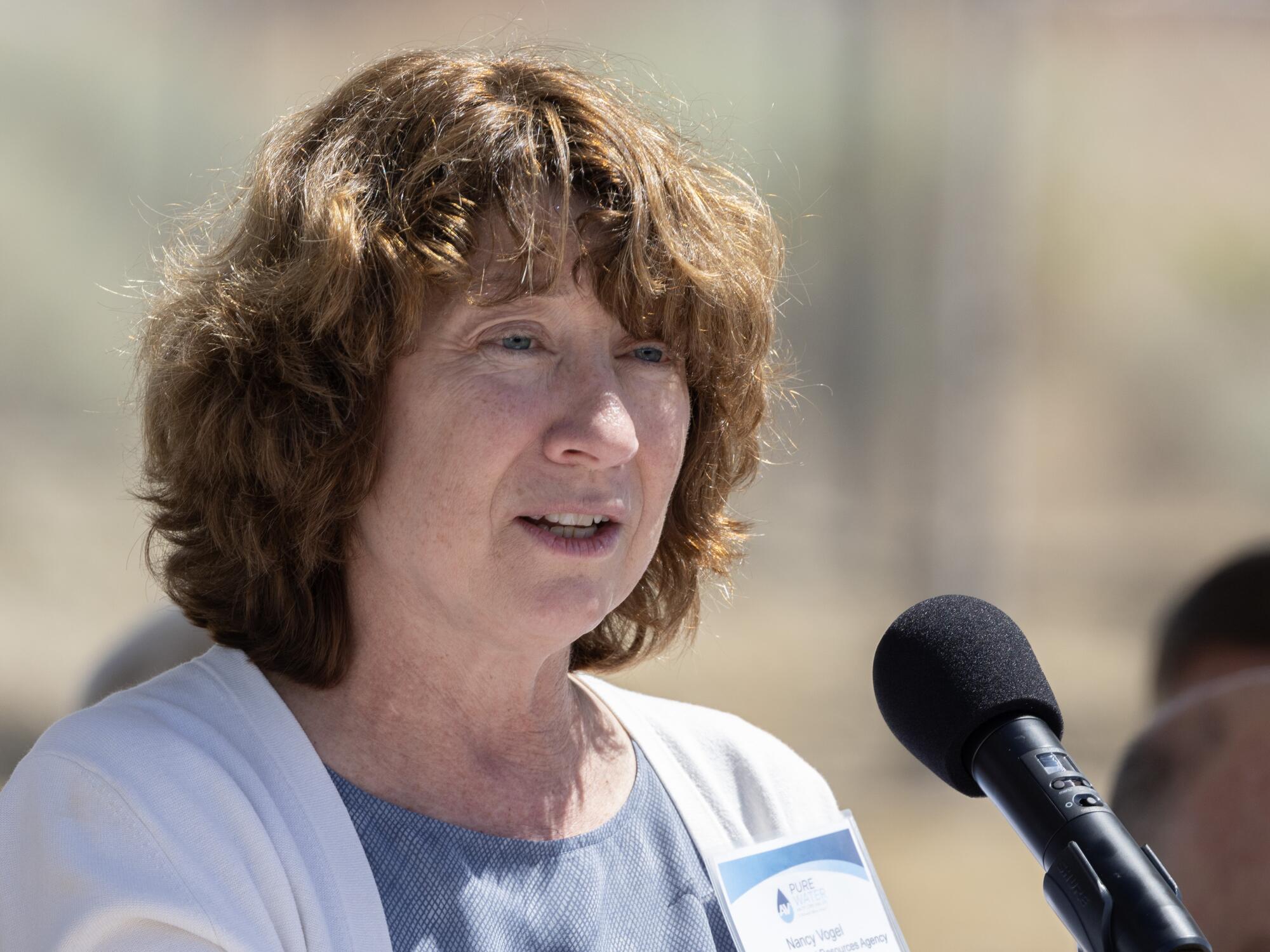
California Department of Natural Resources Deputy Secretary for Water Nancy Vogel announced Project Monarch in Palmdale.
(Myung J. Chung/Los Angeles Times)
“A cornerstone of California’s climate change leadership is electrifying our economy and decarbonizing our electric grid, and we’ve set ambitious goals to do just that,” Vogel told the audience on Thursday. “But we can’t get there by simply reducing emissions; we have to start capturing existing emissions.”

Proactive and impactful reporting on climate change, environment, health and science.
When complete, Project Monarch and its wastewater treatment division, Pure Water Antelope Valley, will purify up to 4.5 million gallons of water per day and capture 25,000 tons of carbon dioxide from the atmosphere per year. (A typical gasoline-powered vehicle emits 4.6 tons of carbon per year, according to the EPA.)
Carbon dioxide from the extraction and burning of fossil fuels is one of the main drivers of climate change. But global CO2 emissions continue to reach new highs, with measurements in May from Hawaii’s Mauna Loa Observatory marking the largest two-year increase in peak CO2 levels on record. Current atmospheric CO2 levels are at 427 ppm and rising.
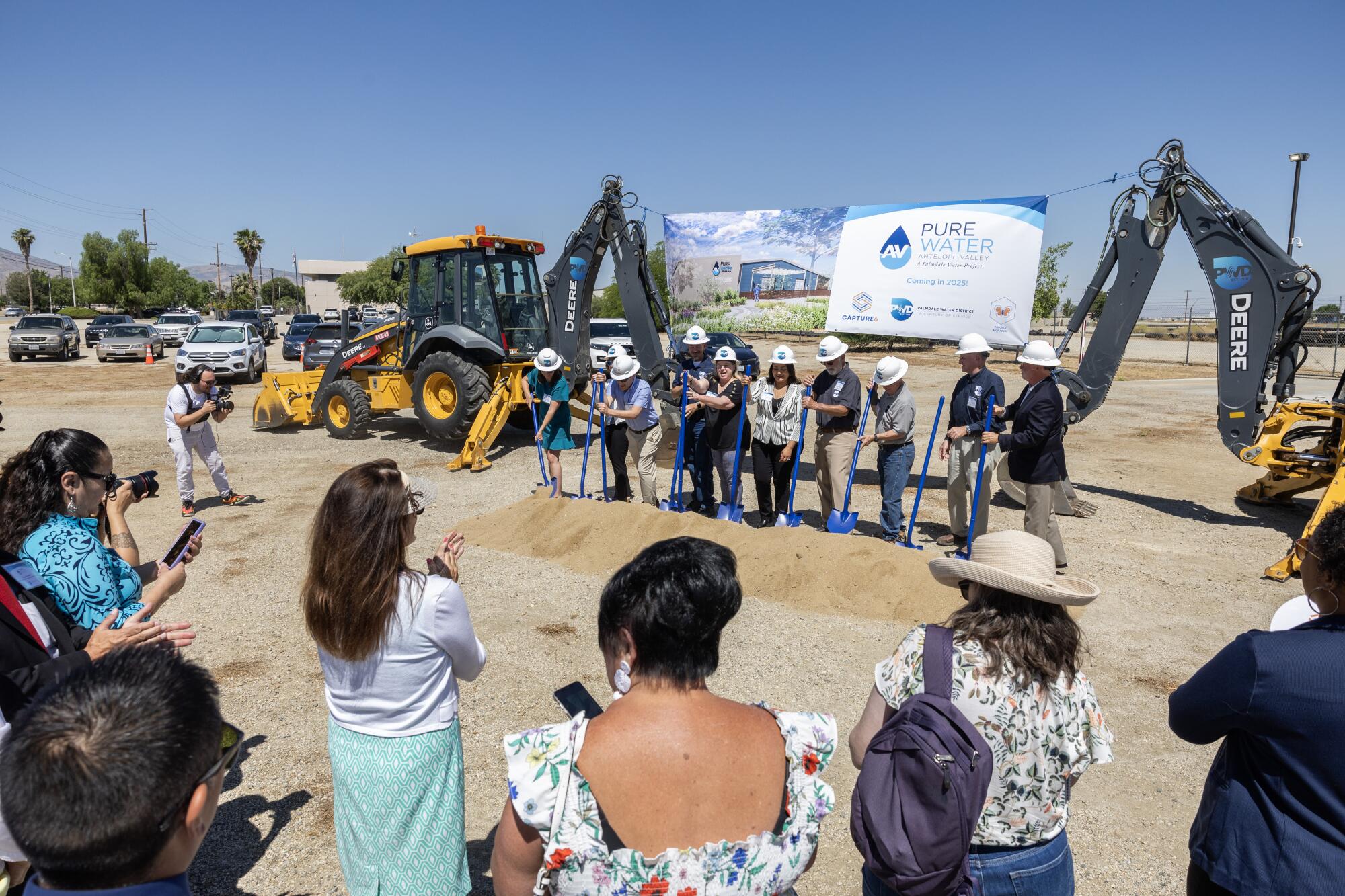
Project Monarch will demonstrate proven technology to capture carbon dioxide directly from the air using Capture 6’s first-of-its-kind technology, while recycling wastewater into drinking water, project managers said.
(Myung J. Chung/Los Angeles Times)
Efforts to reduce those emissions and remove carbon dioxide from the atmosphere are being stepped up by the California Air Resources Board and the Intergovernmental Panel on Climate Change, which are promoting the use of so-called direct air capture technology.
“Pure Water will increase drought resilience, allow for local control of water, and improve groundwater quality and quantity,” said Dennis Lamoreaux, general manager of the Palmdale Water District. “With the ability to capture carbon with Project Monarch, it’s a win-win for everyone.”
Capture 6 has received an $8 million grant from the California Energy Commission, while the Biden administration has announced investments of more than $3.5 billion in direct air capture projects across the country.
But the Palmdale project isn’t the only new carbon capture development in Los Angeles County: On Friday, officials from CarbonCapture Inc. gathered in Long Beach to introduce the nation’s first commercial-scale direct air capture system designed for mass production.
The device, which resembles a shipping container, can remove more than 500 tonnes of carbon dioxide from the atmosphere per year.
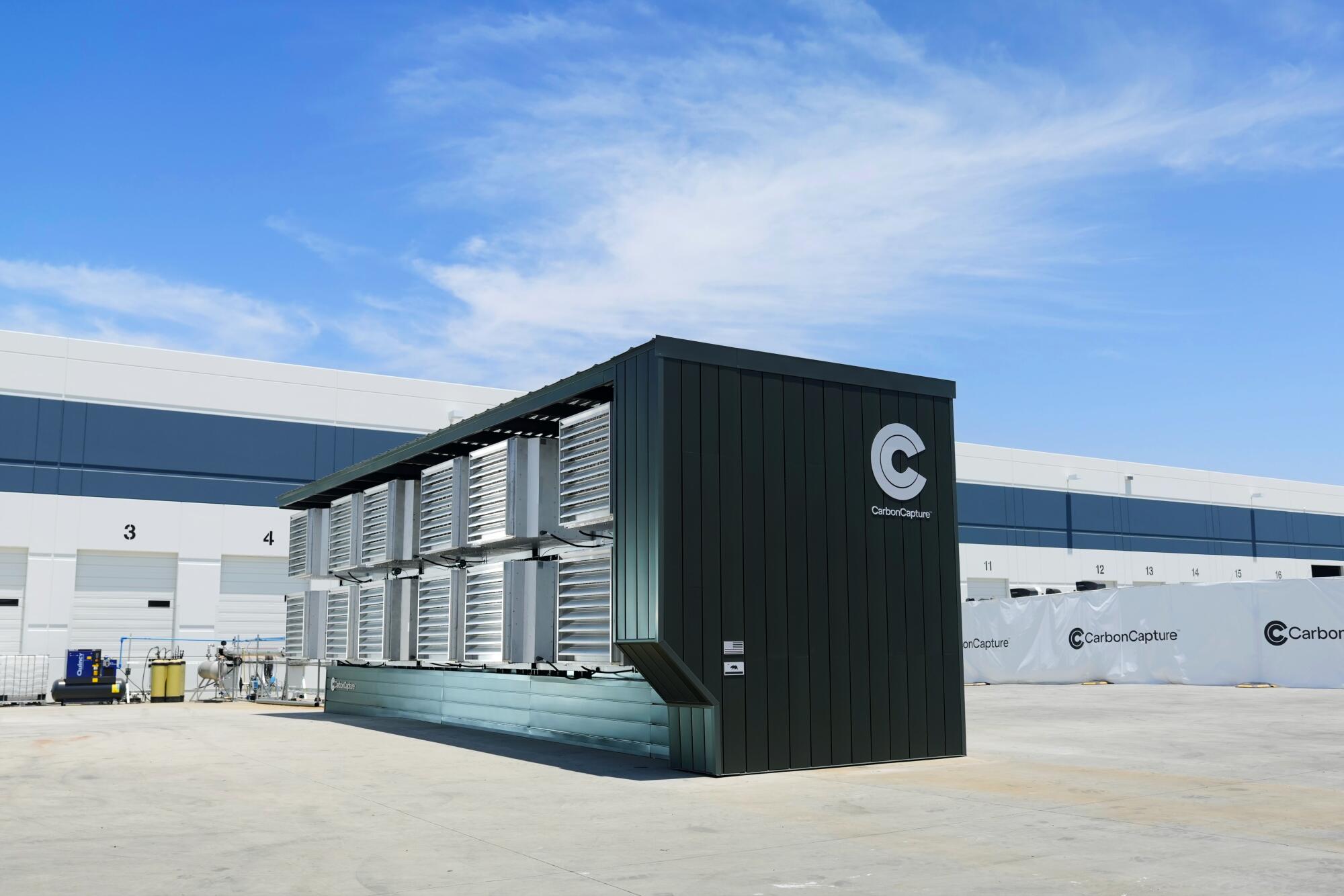
CarbonCapture Inc.’s Leo Series direct air capture modules are mass produced and can capture more than 500 tonnes of atmospheric carbon dioxide per year.
(Carbon Capture Co., Ltd.)
“Carbon Capture’s work with modular direct air capture and efforts to increase production and lower the cost of this technology highlights the essential role the private sector plays in developing and deploying carbon management at the scale necessary to achieve a clean energy and industrial future,” Brad Crabtree, U.S. Department of Energy Under Secretary for Fossil Energy and Carbon Management, said in a statement.
The Los Angeles-based company also announced that its new facility in Mesa, Arizona will mass produce up to 4,000 DAC modules per year.
This joins similar efforts such as Los Angeles-based Captura, which is working to remove carbon dioxide from the upper ocean; Los Angeles-based Avnos, which is capturing carbon while producing water; and Los Angeles-based Equatic, which is using the ocean to remove carbon dioxide from the atmosphere.
“If Los Angeles, and all of California, can do this, the world knows the rest of the world can do it too,” said Edward Sanders, Equatic’s chief operating officer.
Equatic was born out of UCLA’s Carbon Management Institute, where researchers discovered a way to combine carbon dioxide removal with hydrogen production, “addressing both past and future emissions in a single process,” the company said.
The company’s San Pedro facility pumps seawater through a series of electric plates, separating the water into hydrogen and oxygen and acidic and alkaline liquid streams. The alkaline, or base, liquid stream is exposed to the atmosphere, where it mineralizes carbon dioxide into carbonates, which are then dissolved and released back into the ocean for permanent storage, the operator says. Sanders says the procedure meets all existing coastal regulations.
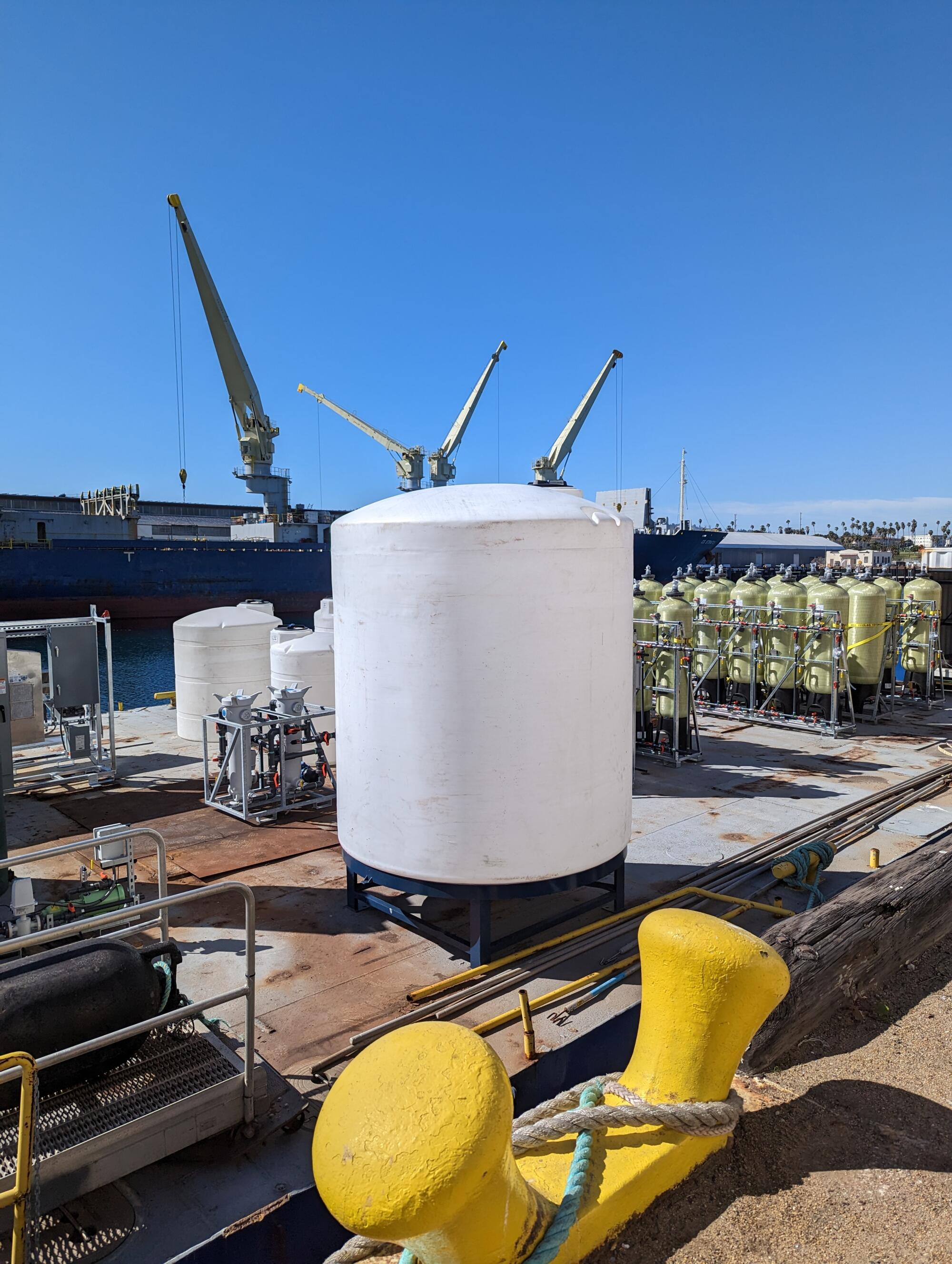
Equatic’s facility in San Pedro is working to use the ocean to remove carbon dioxide from the atmosphere.
(Aquatic)
Moreover, the hydrogen produced in the process has negative carbon emissions, making it a renewable energy source that can be used as fuel for CO2 removal processes or sold to other users, he said.
Earlier this month, Equatic announced it was partnering with a Canadian developer to build North America’s first commercial-scale marine carbon dioxide removal facility in Quebec, following successful facilities in Los Angeles and Singapore. The San Pedro facility will capture about 40 tonnes of carbon dioxide per year, while the Quebec facility will capture about 100,000 tonnes per year, Saunders said.
“It’s important to do this on a global scale, but we know there’s a lot happening here in Los Angeles, and it’s really important to guide people and let them see it — to walk around and see one of these plants and literally hold in their hands the carbon that we’ve taken out of the atmosphere,” he said.
A variety of projects represent Southern California’s carbon capture boom, but each employs different strategies.
Project Monarch’s carbon capture process begins at Palmdale’s new wastewater treatment plant, which purifies water reclaimed from Los Angeles County for reuse as drinking water. The purification process removes bacteria, viruses, and other harmful pathogens from the water, but also produces a by-product: saltwater, known as brackish water. The District planned to store the saltwater in outdoor ponds, where it would sit until it evaporated.
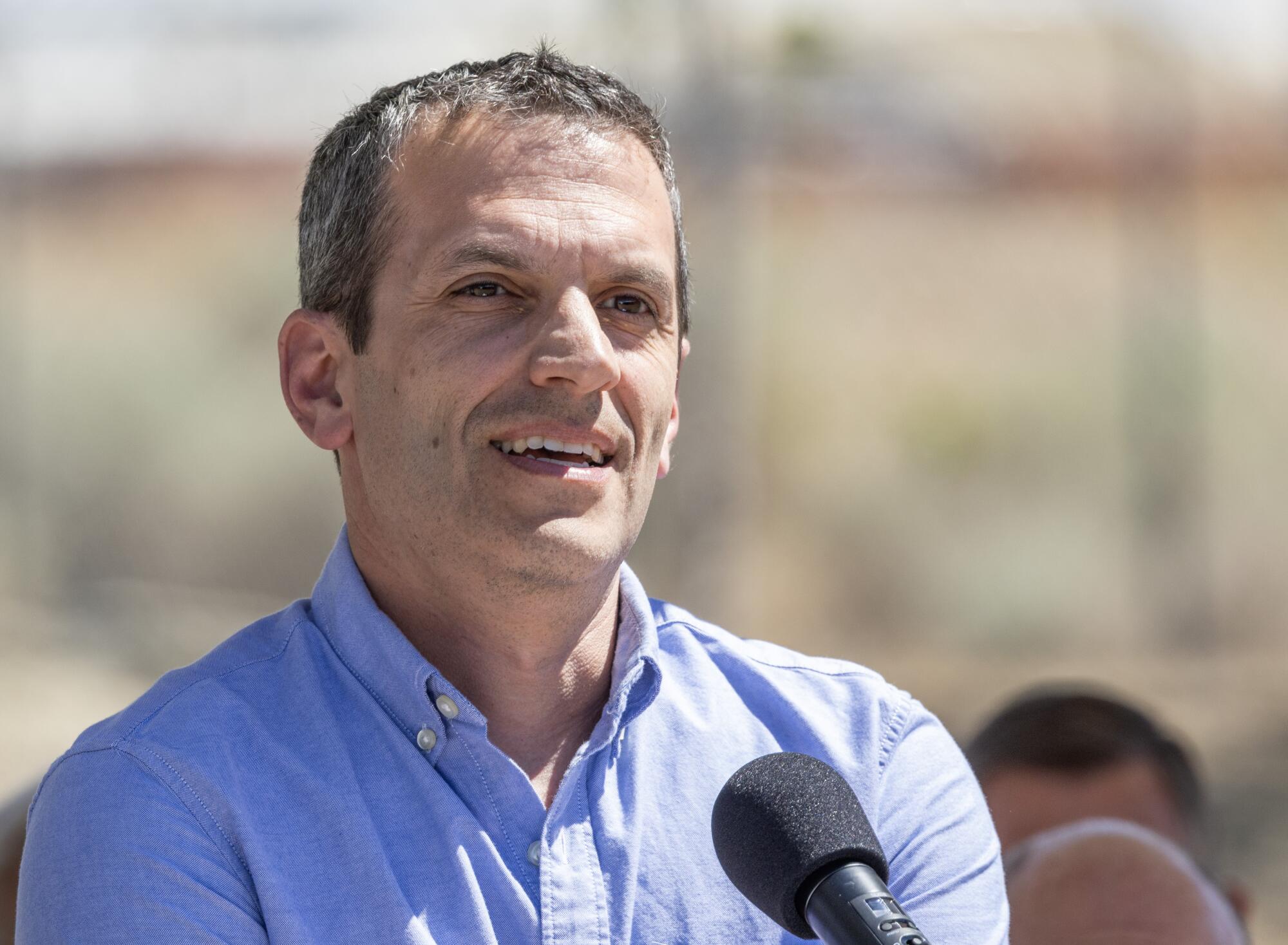
Capture 6 CEO and co-founder Ethan Cohen Cole attended the groundbreaking ceremony for PureWater Antelope Valley and Project Monarch in Palmdale on Thursday.
(Myung J. Chung/Los Angeles Times)
Instead, Capture6’s technology puts the brine through a series of steps to first convert it into sodium hydroxide, which naturally removes CO2 from the atmosphere, and finally into sodium carbonate, a mineralized form of the captured carbon. The resulting rocks dissolve in water and can be directly reused in water treatment processes or injected into aquifers or other non-potable underground formations for permanent storage.
“This facility has the potential to demonstrate across the state, the nation and perhaps the world that it is possible to build a carbon-negative water treatment facility,” Capture 6 CEO Ethan Cohen Cole said.
Cohen Cole said the project will run on electricity from California’s increasingly renewable grid, adding that Los Angeles’ proactiveness and innovation on water and energy issues made it a natural fit for the project, which will be the first of four such efforts worldwide.
“California is very similar to many other water-scarce areas of the world that are eager to decarbonize,” he said. “The combination of the two makes it a great place.”
However, the carbon capture process is not without its drawbacks: it can be costly and energy intensive, and the best means and methods for storing carbon are still under active research.
Many companies sell carbon removal credits to other companies, including Meta, Chase, McKinsey, and Boeing. Capture6, Equatic, and CarbonCapture Inc. boast high-quality credits, but the carbon credit market as a whole has also been criticized for allowing polluters to continue producing emissions while “greenwashing” their reputations.
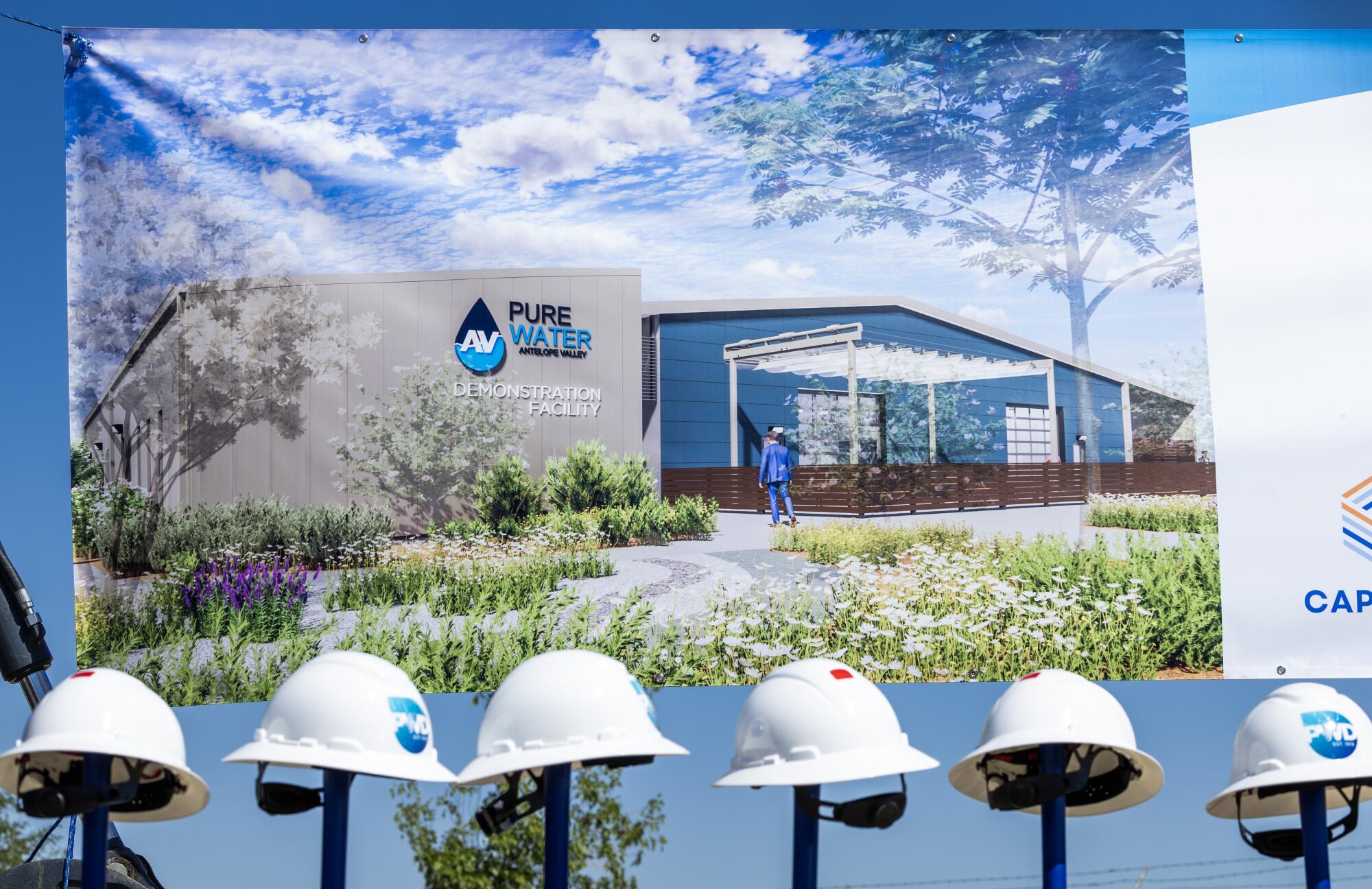
A hard hat stands in front of a rendering of Pure Water Antelope Valley and Project Monarch, which when completed will produce up to 4.5 million gallons of purified water daily and capture 25,000 tons of carbon dioxide from the atmosphere each year.
(Myung J. Chung/Los Angeles Times)
Similarly, experts say that just because our ability to remove carbon dioxide from the atmosphere is rapidly increasing doesn’t mean we should be given the green light to continue emitting it: The Intergovernmental Panel on Climate Change estimates that we need to remove 6 to 12 billion tonnes of carbon dioxide each year by mid-century to keep global warming to within 1.5 degrees.
“Even if we could get to zero emissions tomorrow, which we won’t, we would need to remove billions of tonnes of carbon dioxide from the atmosphere,” Equatic’s Sanders said, “But we don’t want to be in a situation where five or 10 years from now it’s too late and we don’t have the technology to remove what we can’t reduce or to clean up the last 120 years of pollution that’s left in the atmosphere.”
Cohen Cole echoed those sentiments shortly after other officials gathered with hard hats and shovels to break ground on Pure Water and Project Monarch, which are scheduled to begin operating in 2025.
“This will only work if we prioritize reducing emissions,” Cohen-Cole said. “We would never argue that we should do carbon removal without reductions. We are encouraged by the fact that both California and the IPCC are saying we need to do this now. We have no other choice.”
Newsletter
Towards a more sustainable California
Subscribe to Boiling Point, a newsletter exploring climate change, energy and the environment, join the conversation and find solutions.
Please enter your e-mail address
sign up
You may occasionally receive promotional content from the Los Angeles Times.

